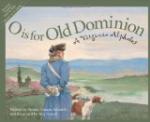According to these directions, the way was now along a road leading down the island. It ran not far from the river bank and through grounds having a border of trees skirting the water’s edge. At last the “little big” house was reached. All the members of the family were away for the summer except one daughter who, with a friend from Richmond for company, was in charge of the servants and managing the island.
The Commodore introduced himself and his sad story of fire and famine. He explained that it would be two or three days before supplies could be got from Norfolk, and darkly hinted at a new chapter of suffering that might be added to the woeful history of the island unless something were done at once. The gloomy picture did not seem to impress the young woman very painfully, for her reply was a laughing one; but a sack of flour went into the basket and a big loaf of bread besides. Upon its coming out in the conversation that we wished to remain at our anchorage for some time and should like to know of any limitations placed upon visitors, the freedom of the island was most kindly extended to us. The Commodore proudly returned with his supplies to the houseboat.
“Saved by the Daughter of the Island!” exclaimed Lady Fairweather. And by that name we came to speak of our benefactress.
After we had broken bread, borrowed bread and good too, another and more successful attempt was made to go on the island. Our object was to visit the old graveyard. Crossing again to the grove on the James River side, we entered in among the shadows that enwrap the ruined church and the crumbling tombs of the village dead. The graveyard, or what remains of it, is coextensive with the grove. When most of the deserted church crumbled and fell a hundred years ago, some of the bricks were used to build a wall around the old burying-ground. Parts of it are standing yet in picturesque, moss-covered ruins.
This time we found workmen engaged on the foundations for the memorial building. So we were prevented from seeing satisfactorily some of the tombs, as they were boxed over to protect them while this work was in progress. However, the caretaker did all that he could for us.
Pitifully few are the stones remaining to mark the graves of that vanguard of English colonization. For most who lie here, the last record has crumbled away. Proud knight, proud lady, gentlemen, gentlewomen, and unknown humble folk, in common brotherhood at last, “dust to dust” and unmarked level ground above them.
One of the most notable of the remaining tombs is that of Lady Frances Berkeley, who rests beneath the shadow of the great hackberry tree that is said to have been brought over, a slender sapling, from England. But a few parts of words remain on the broken stone, and the date is gone. Though after the death of her husband, Sir William Berkeley, this lady became Mrs. Philip Ludwell, yet she clung to the greater name and insisted that her long sleep should be under its carven pomp.




